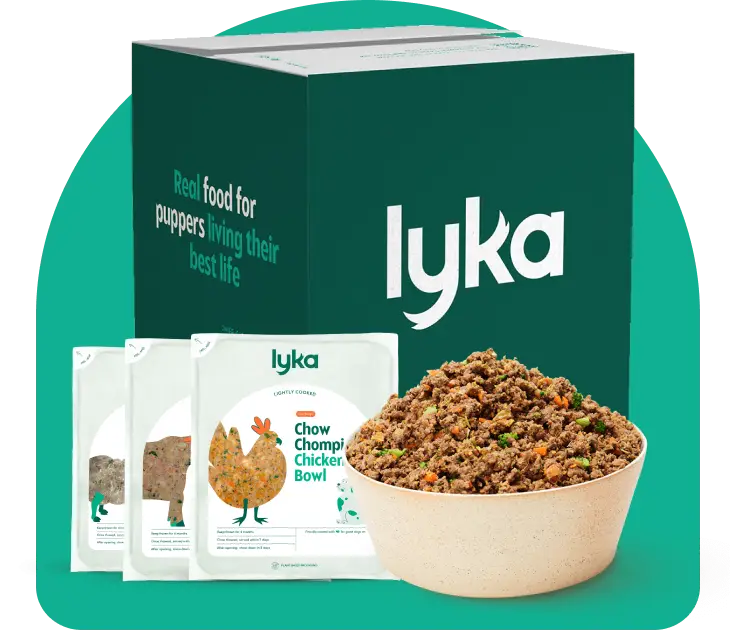Are you confused about what food is best for your dog?
All pet parents want the best for their pups. There are so many processed dry and wet food options on the market, but research shows that, like us, dogs respond best to a fresh-food diet.
Recent studies have found that kibble-based diets produce higher levels of metabolic stress and systemic inflammation. That’s why Lyka believes unprocessed dog food is best.
So, what’s the go with processed diets?
A highly processed diet kills natural ingredients and these need to be replaced with artificial ingredients. Kibble is cooked at a very high temperature between 100 and 200 degrees Celsius. It’s then dried in a second heating process of up to 100 degrees Celsius.
Other processed diets like canned food include additives to keep the food stable. They are also heat sterilised to control harmful bacteria that can grow. The other drawback of highly processed diets is that they are often topped up with legumes and grains and have a lower meat content.
What DogRisk has discovered about kibble diets
DogRisk is a research group at the department of equine and small animal medicine at the Faculty of Veterinary Medicine at the University of Helsinki. They conduct independent research on the associations between dogs’ nutrition and their diseases with a focus on preventative measures.
DogRisk’s research has some interesting findings about dry food diets. Pups eating kibble experienced changes in their metabolites that suggested higher levels of biological stress. They also found that dogs eating this type of diet had higher levels of homocysteine — a marker for disease in dogs.
The scary side of the dog food industry
In Australia, the dog food industry is highly unregulated. This means that any safety measures in our industry are voluntary, and this has led to several cases of Australian pet owners finding foreign objects and other nasties in their pet food.
In 2021, there were mass hospitalisations of our beloved furry friends due to contaminated pet-grade meat that had been exposed to the chemical indospicine which can cause liver disease. In 2018, there were reports of multiple dogs dying from Megaesophagus — a disorder that affects the oesophagus’ ability to carry food and liquid from the mouth to the stomach.
The question is: what would you feed your pup?
In this context, it begs the question, ‘how is it still okay to feed dogs low-quality, pet-grade meat and food deemed unfit for human consumption?’
This meat is rendered and scorched at high temperatures. The average dry dog food is high in starch and contains 45% carbohydrates along with potentially harmful hidden ingredients and contaminants. Labelling is also deceptive and pet food products only need to include 3% of an ingredient. It sounds like a risky proposition!
Lyka: fresh, human-grade and nutritious
Lyka is offering a fresh food alternative to kibble. Our lightly cooked approach is designed to minimise food-borne risks and maximise natural nutrient retention while stopping pathogenic contamination and allowing easier digestion. A minimal processing approach ensures nutrients are preserved in our recipes.
Our in-house Vet, Dr. Matthew Muir formulates each meal alongside a team of board-certified veterinary nutritionists.
Want to learn more about why we do what we do? Check out our philosophy.
)
)
)

)
)
)
)
)
